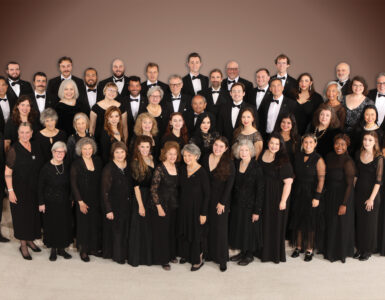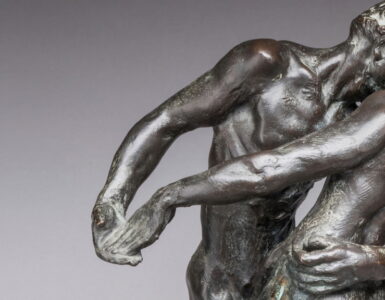 If you love history-based museums, then you will want to attend this special free event on Sunday, May 16th, 2010 — Museums of Arroyo day, from 11 a.m. – 4 p.m.
If you love history-based museums, then you will want to attend this special free event on Sunday, May 16th, 2010 — Museums of Arroyo day, from 11 a.m. – 4 p.m.
The 21st annual Museums of the Arroyo (MOTA) day invites the public to tour 5 museums located along the celebrated Arroyo Seco in Los Angeles and Pasadena for a free day of art, architecture and history of the Arroyo Seco area
Participating museums include Heritage Square, the Los Angeles Police Historical Society Museum and the Lummis Home and Garden in Los Angeles as well as the Gamble House and Pasadena Museum of History in Pasadena. This free event will include ongoing shuttle service between the five participating history-based museums that focus on preserving and perpetuating early Los Angeles life. All will remain open, free of charge, throughout Museums of the Arroyo day.
Experience the diverse mixture of art, architecture and history along the Arroyo Seco areas of Los Angeles and Pasadena.
“Our theme for this year, our 21st anniversary, is “˜Women in Early Los Angeles,”™” explains Jessica Maria Alicea-Covarrubias of Heritage Square, whose museum is premiering an exhibit celebrating the 90th anniversary of the Women”™s Suffrage movement this June and who plans to have suffragettes take part in Heritage Square”™s festivities for Museums of the Arroyo Day.
In addition, the LA Police Historical Society Museum will pay tribute to the first policewoman in the United States – Alice Stebbins Wells, who joined the LAPD on September 12, 1910 – while the Pasadena Museum of History will present “Pasadena Patron: The Life and Legacy of Eva Scott Fenyes,” an artist and arts patron who arrived in Pasadena in 1896 and has been likened to Isabella Stewart Gardner in Boston and Peggy Guggenheim in New York. Exhibition highlights will include items from the Fenyes collection never before on public display.
A number of the museums will also present an array of events and festivities developed especially for Museums of the Arroyo Day. These will range from a vintage doll display, blacksmiths working at their craft and frontier reenactments courtesy of the Western Educators, Shooters and Troopers at Heritage Square to a performance of music from the 1900s by Ian Whitcomb and the Bungalow Boys – plus a program, led by Cultural Historians in Residence, Walter and Sheila Nelson, called “Mind Your Manners” on etiquette and social customs of the era – at the Pasadena Museum of History.
“A big favorite with visitors of all ages, from two to 92, is our police helicopter, which is on permanent display,” adds Glynn Martin, Executive Director of the Los Angeles Police Historical Society Museum. John Buntin, bestselling author of LA Noir, will appear at the museum during MOTA Day as well.
With free and continuous shuttle service running between museums, visitors have the option of parking their cars once and then shuttling to the museums of their choice. Visitors can also take the Gold Line, exiting the train at the Heritage Square stop then catching shuttles to the other museums.
“You can read about Los Angeles”™ history in books,” concludes Alicea-Covarrubias. “But there”™s nothing quite like attending Museums of the Arroyo Day and feeling like you”™ve traveled back in time to be part of it.”

For more information on Museums of the Arroyo day, visit the official site or call the MOTA hotline number at 213.740.TOUR (8687).
Sunday, May 16th, 2010
11 a.m. – 4 p.m.
Report by Pauline Adamek
ABOUT THE MUSEUMS
Heritage Square
A living history museum reflecting the settlement and development of Southern California from the Civil War to the early 20th Century, Heritage Square Museum offers visitors a look into the everyday lives of Southern Californians at the close of the 19th Century.
Guided tours of the museum are supplemented by special events, such as Museums of the Arroyo Day®, which take guests back in time to the era where electricity was a novelty, a trip to the beach was often a full-weekend activity, and manners were distinctly different from those of today.
The eight historic structures located at the museum, constructed during the Victorian Era, were saved from demolition and serve as a perfect background to educate the public about Southern California’s early development. From the simplicity of the Octagon House to the opulence of the Perry Mansion, the Museum provides a unique look at the lifestyles of the people who contributed so much to the development of modern Los Angeles.
Lummis Home and Garden
Built between 1898 and 1910 the Lummis Home was built by Charles Fletcher Lummis, which he said he built “to last a thousand years.” Its architecture, Lummis had written, “is part of my life and my brains and my love and my hands.”
The Lummis Home stands on the west bank of the Arroyo Seco, the usually-dry riverbed that begins in the San Gabriel Mountains and extends south to join the Los Angeles river on the water’s path to the Pacific Ocean. Once, the Arroyo Seco trickled through the water-smoothed stones lining the property to the east, fluctuating between periods of heavy flow and utter dryness. Today, the Arroyo Seco–like the Los Angeles River–is but a concrete bed built to tame turbulent waters during the rainy season. However, the stones that once lay beneath the sycamore trees and native plants now form the structure that is the Lummis Home today. The south-facing facade of the home is comprised of intricately-placed stones acquired from this nearby stream-bed, built largely by the energy and discipline of Charles Lummis.
Booster, Native American rights activist, writer, City Librarian, translator, and ethnographer, Charles Lummis was a man of many talents. An eclectic man in many respects, the home represents Lummis’ love of the American Southwest and wood-hewn household furnishings. In many respects the Lummis Home represents the beginning of the Arts & Crafts aesthetic that was to soon take the architectural world by storm–only to peak with Greene and Greene homes such as the Gamble House. A warm, intimate connecting with the outdoors is brought into the interior of the house with concrete floors, wood furniture, railroad pole supporting beams for the ceiling and delicate decorative carved woods.
The Los Angeles Police Historical Society Museum
The Los Angeles Police Historical Society Museum is located in the 1925 Highland Park Police Station, which has been salvaged and restored to its original Renaissance Revival style and, today, is a registered National Historic landmark. Opened in 2001, the museum shares the rich history of the LAPD from its beginnings in 1869 to the 21st century.
Visitors can tour the station, which showcases private collections and historical memorabilia dating back to the late 1800s, and use their own cameras to create “Booking Photos” of their favorite “˜crook”™ in the historic jail. Outdoors, visitors of all ages – from toddlers to senior citizens – can climb into a retired police helicopter”¦and even try on police gear.
The Gamble House
The Gamble House in Pasadena, California, is an outstanding example of American Arts and Crafts style architecture. The house and furnishings were designed by Charles and Henry Greene in 1908 for David and Mary Gamble of the Procter and Gamble Company. The house, a National Historic Landmark, is owned by the City of Pasadena and operated by the University of Southern California and is open for public tours.
The Pasadena Museum of History
A museum and research library/archives focusing on the history of Pasadena and the San Gabriel Valley, the Museum is on the grounds of the Fenyes Mansion – one of the few remaining grand homes on Pasadena”™s former “Millionaire”™s Row.” The History Galleries contain changing exhibitions. The Museum’s historic structures also include the Curtin House, a gracious French-style residence designed in 1915 by Sylvanus Marston, and the Finnish Folk Art Museum, a building designed by Frederick Roehrig and adapted by Consul Paloheimo for use as a sauna/guest house.”¨”¨In 1993 construction was completed on Phase I of the Museum’s History Center building, which houses the Research Library and environmentally controlled archival storage areas for the Museum’s extensive collections. Phase II of the project, completed in 2000, includes the History Center Galleries, Giddings Conference Room, Museum Store and Administrative Offices.
The Mission of the Museum is to promote an appreciation of history, culture, arts, and sciences relevant to Pasadena and adjoining communities.
The Fenyes Mansion is currently closed for renovation but the other museum spaces remain open.








This is very interesting, You’re a very skilled blogger. I have joined your rss feed and look forward to seeking more of your fantastic post. Also, I’ve shared your web site in my social networks!